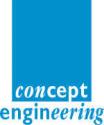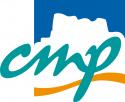UB02 Session 2
Date: Tuesday 15 March 2016
Time: 12:30 - 15:00
Location / Room: Booth 15, Exhibition Area
| Label | Presentation Title Authors |
|---|---|
| UB02.1 | IN-NODE PROCESSING: MODELLING FRAMEWORK FOR IN-NODE PROCESSING IN INDUSTRIAL SENSOR AND ACTUATOR NETWORKS. Presenter: Qaiser Anwar, Mid Sweden University, SE Authors: Qaiser Anwar, Muhammad Imran and Mattias O´Nils, Mid Sweden University, SE Abstract Architecting efficient systems with on-board sensing capabilities with a growing number of sensing devices is a challenging task, in particular because of the range of the technological field, as well as the diversity and complexity of requirements. We present a novel modeling framework, which can describe different implementation strategies for computation of data locally. In this framework, we first describe the systems in Architecture Analysis and Design Language (AADL), following which the described system is exported to XML which is then given input to java based software program. This program automatically generates different implementation options, illustrates different parameters such as processing energy, communication energy, latency and design complexity. To show a proof-of-concept, we have modelled a real-life system in a modelling framework, which shows that the framework can be of use in automated design space and architecture exploration for in-node processing. Download Paper (PDF) |
| UB02.2 | EXTRA-FUNCTIONAL PROPERTY SIMULATION WITH VIRTUAL PLATFORMS Presenter: Ralph Görgen, OFFIS - Intitute for Information Technology, DE Authors: Ralph Görgen, Kim Grüttner and Sören Schreiner, OFFIS - Intitute for Information Technology, DE Abstract The demo shows the usage of virtual platforms and model-based design to perform early analyses of extra-functional properties in a mixed-critical scenario. The application shown is a quadro-copter equipped with a camera system. The copter's flight controller is safety critical; the video processing is less critical. Both parts of the system are implemented in a single chip, a Xilinx ZNQ SoC. The video processing is implemented in the ARM dual-core, the flight controller is realized in the FPGA part and based on two MicroBlaze cores. This platform has been modeled as an OVP-based virtual platform, which is extended by more fine grain timing models as well as power models. Furthermore, it can be coupled with a model of the quadro-copter physics and environment realized in iXtronics CamelView. We will show how to use this setup to analyze timing, power, and temperature behavior of the system and the interference between the high- and low-critical parts with respect to these properties. Download Paper (PDF) |
| UB02.3 | COMPSOC: VIRTUALISING CONTROL APPLICATIONS ON A DISTRIBUTED COMPSOC PLATFORM Presenter: Kees Goossens, Eindhoven University of Technology, NL Author: Kees Goossens, Eindhoven University of Technology, NL Abstract In our University Booth we will demonstrate that multiple real-time control applications can be developed independently even though they share platform resources. We show that they can run together with other applications on a wireless network of multiple CompSOC platforms, where each platform has multiple processors, NOC, and a complete microkernel, streaming software, and resource management stack. We will also show that (control) applications can be quickly and safely loaded and started without interference to other (real-time control) applications, thus implementing a network of MPSOCs for distributed mixed time-criticality applications. Download Paper (PDF) |
| UB02.4 | RC3E: DESIGN AND TEST AUTOMATIZATION IN THE CLOUD Presenter: Patrick Lehmann, Technische Universität Dresden, DE Authors: Patrick Lehmann, Oliver Knodel, Martin Zabel and Rainer G. Spallek, Technische Universität Dresden, DE Abstract Cloud computing is getting more and more interesting for companies, caused by its flexibility to provide apparently endless resources and nouveau services, while reducing he total cost of ownership for the user. Fields of applications reach from web technologies over storage solutions to complex business processes. The domain of chip and system design is well known for offloading resource intensive and long running synthesis or simulation task onto centralized servers. As hardware designs grow in an exponential way and verification requirements were strengthened, cloud services are investigated to compensate these needs. Anyway, in the end real hardware tests cannot be avoided. Our RC3E eco system brings close to the hardware prototype development and automated hardware testing into the cloud, continuing the principle of "test often and test early". The architecture offers virtualized and shared FPGA resources for prototyping, with automated remote debugging capabilities. Download Paper (PDF) |
| UB02.5 | AIPHS: ADAPTIVE PROFILING HARDWARE SUB-SYSTEM Presenter: Luigi Pomante, Università degli Studi dell'Aquila, IT Authors: Luigi Pomante1, Giacomo Valente2 and Vittoriano Muttillo2 1Università degli Studi dell'Aquila, IT; 2Università Degli Studi Dell'Aquila, IT Abstract Run-time monitoring systems on reconfigurable logic have the advantage that they can be customized with respect to specific applications: in the context of automated testing, this can lead to powerful scenarios. This demo presents a smart monitoring system by showing both a customization for stalls identification in a message passing scenario (based on four MicroBlaze that executes a bare-metal FFT application), and a customization for bus utilization monitoring in a symmetric multi-processing system scenario (based on four Leon3 running a custom Linux kernel). The whole development flow (and related prototypal EDA tools), that starts exploiting a library of elements to compose the desired hardware profiler, that leads to the introduction of such a profiler in the target architecture, and that allows profiling data collection and analysis will be shown. Moreover, a comparison among different functionalities will be illustrated. Both systems will be illustrated by using Zynq7000 SoC. Download Paper (PDF) |
| UB02.7 | DIGITALLY DRIVEN TOP-DOWN METHODOLOGY FOR MIXED SIGNAL CIRCUIT DESIGN Presenter: Markus Mueller, University of Heidelberg, DE Authors: Markus Mueller, Maximilian Thuermer and Ulrich Bruening, University of Heidelberg, DE Abstract In this methodology,synthesizable modules and full custom blocks are first described in an HDL in a top-down approach. For analog cells, real number based models are created.Once the complete mixed signal model is done, each cell in the design is completely described concerning interface and behavior. The models then serve as specification for the full custom cell development.Schematics which don't include any primitives are automatically generated from the HDL description by a scripted flow to ensure consistency.Design space exploration can be done fast and very efficient this way. Cells which can be reused at different places in the design are identified and problems arising from interactions on the system level are found early in the design phase.This methodology accelerates the design process significantly, avoids errors and provides higher flexibility for design changes. A digital centric design example of a High Speed SerDes IP is demonstrated using the described methodology. Download Paper (PDF) |
| UB02.8 | GPCDS: AN INTERACTIVE TOOL FOR CREATING SCHEMATIC MODULE GENERATORS IN ANALOG IC DESIGN Presenter: Matthias Greif, Reutlingen University, DE Authors: Matthias Greif and Juergen Scheible, Reutlingen University, DE Abstract While digital design automation is highly developed, analog design automation still remains behind the demands. Previous approaches of circuit creation, which are usually based on optimization algorithms, do not satisfy industrial requirements. A promising alternative is given by procedural approaches, which imitate the solution strategy of a human expert. We are working on parameterized generators (such as PCells) for analog circuit and layout modules, special kinds of such procedures. We present "gPCDS", a novel tool for the creation of schematic generators for analog circuit design. Associated with a common design environment, gPCDS offers a sophisticated interactive design flow for the development of schematic PCells. gPCDS thus substitutes the crucial process of manual code writing by an intuitive graphic-based way of schematic PCell creation. The GUI of gPCDS provides a variety of useful functions, such as defining parameter ranges or placing predefined building blocks. Download Paper (PDF) |
| UB02.10 | 6CH-SDR-PLATFORM: 6 CHANNEL SDR PROTOTYPING PLATFORM FOR VEHICLE SELF-LOCALIZATION Presenter: Marko Rößler, Technische Universität Chemnitz, DE Authors: Marko Rößler1, Ulrich Heinkel1, Daniel Fross1 and Ahmad El-Assaad2 1Technische Universität Chemnitz, DE; 2Novero GmbH, DE Abstract Many modern applications depend on location information. Precision and availability out- and indoor get more and more crucial. Acquisition of this information from radio links used for wireless data transfer is logical step. Link-availability, RSSI, timing or phase shifts are byproducts that carry knowledge about the distance between communication endpoints. Extensive signal processing, advanced receiver setups and statistical algorithms allow the extraction of reliable position information. We present a high performance multichannel SDR platform based on FPGA that allows the quick development of respective technology parts. It is based on KC705-Board connecting a Linux PC via PCIe. Featuring three RF-Frontends (AD-FMCOMM-S3) we are able to control six independent paths time synchronous. With 50 MSa/s at 12 bit resolution a data stream of 7.2 Gbit/s can be processed. We target for radio frequency based vehicle self-localization using smart array antennas. Download Paper (PDF) |
| 15:00 | End of session |
| 16:00 | Coffee Break in Exhibition Area |











